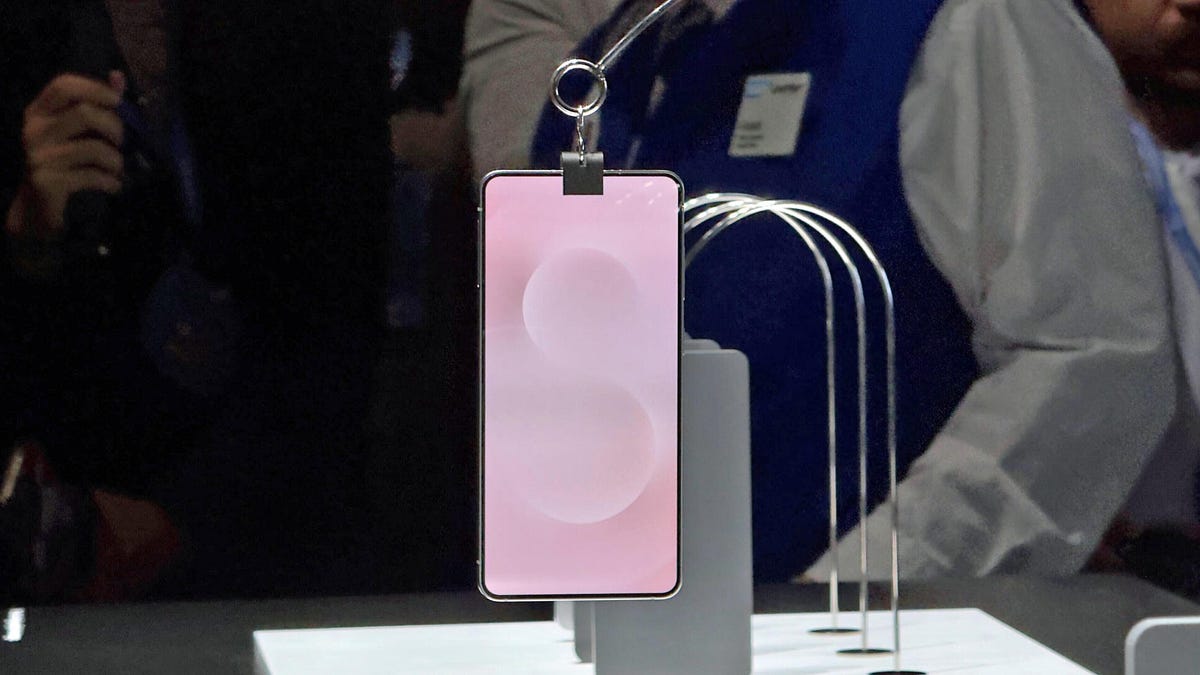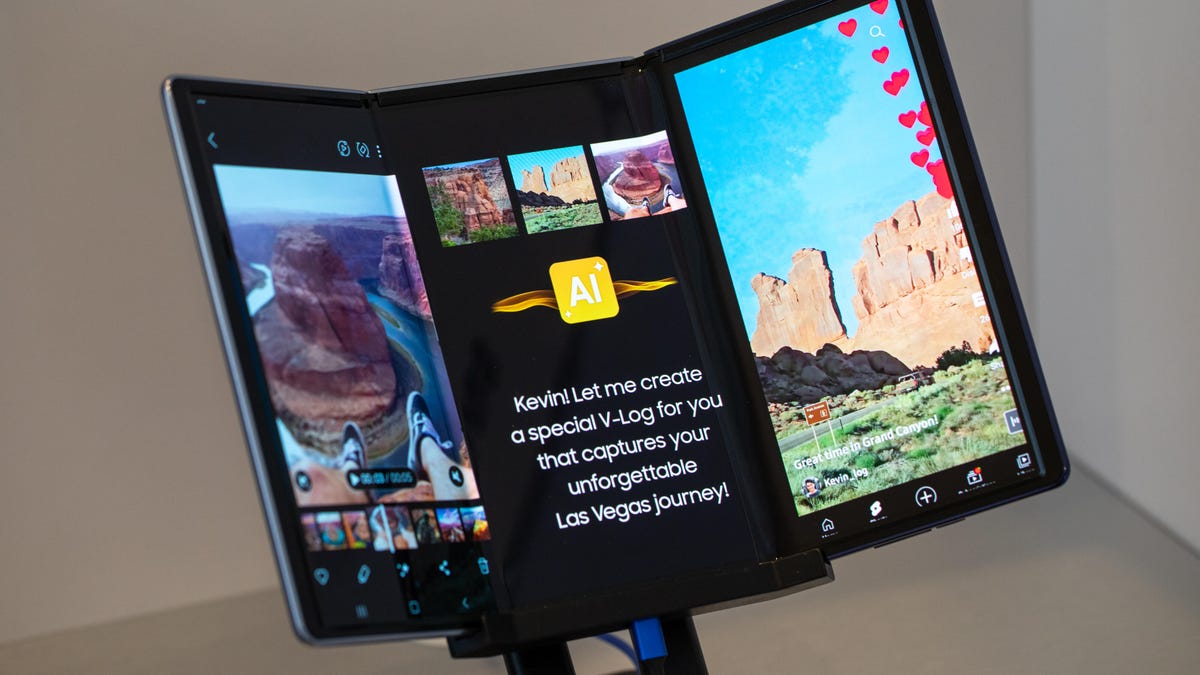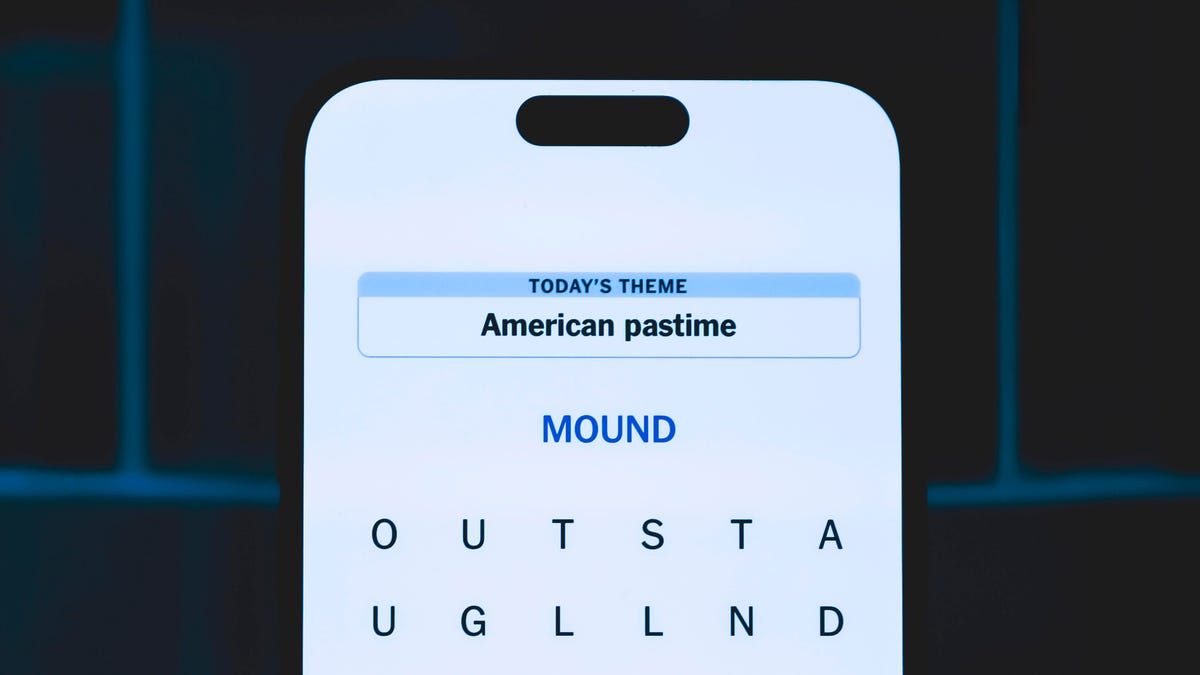Technologies
Samsung Galaxy S25 Edge: What We Know Ahead of the Slim Phone’s May 12 Debut
Samsung’s Galaxy S25 Edge will be getting its own Unpacked event on Monday.

Samsung’s Galaxy S25 Edge will be the fourth edition to the company’s flagship phone line, with a thin and light design that’s meant to set it apart from the Galaxy S25, S25 Plus and S25 Ultra. While Samsung initially gave the device an early look during the same January event that debuted the rest of the S25 lineup, the Edge will get its own Galaxy Unpacked event on Monday, May 12, at 8 p.m. ET (5 p.m. PT).
And in an early tease of the event, Samsung has also announced that the phone will get a new glass ceramic display called Gorilla Glass Ceramic 2 and a 200-megapixel wide camera. Outside of that display and camera announcement, the S25 Edge may have also received its biggest unofficial leak yet, with a post from WinFuture that claims to describe the phone’s design, dimensions, camera and other details about its internals.
Here’s everything we know so far, along with some rumors on what we could get with the S25 Edge.
What does the Samsung Galaxy S25 Edge look like?
The Samsung Galaxy S25 Edge’s actual dimensions aren’t yet available but a display (which attendees couldn’t touch) showcasing a surprise first look during Samsung Unpacked event in January revealed that it’s noticeably slimmer than a standard Android flagship phone. Samsung placed its first look of the Edge alongside stand-in models that approximated the typical thickness of other phones.
That display implied that the S25 Edge would have similar height and width dimensions to phones akin to the standard Galaxy S25 but would be noticeably slimmer. Unlike other S25 phones that have three or more rear cameras, this edition will include only two, like the foldable Z Flip series. One of those cameras will be a 200-megapixel wide lens, which Samsung confirmed when announcing the Edge’s Unpacked event.
We do know that the display will be made from the new Corning Gorilla Glass Ceramic 2 for a «sleek yet strong design,» according to Samsung’s announcement of that display.
That display announcement lines up with prior comments on the phone’s durability, which Samsung UK Marketing Director Annika Bizon said was a priority despite its thinner frame. After remarking on the phone’s design that was revealed in January as a top feature, Bizon began teasing the phone’s durability during an interview with TechRadar at Mobile World Congress 2025.
«With anything slim, durability [has to come as part of the package]. Those are the two features [of the Edge] that are exciting [for us]. Well, I know durability isn’t exciting, but it’s really important. So watch this space because there are some exciting things to come regarding this phone,» Bizon told TechRadar.
While we don’t have official specs yet on the phone, a reportedly leaked Galaxy S25 Edge specs list has popped up on WinFuture that claims to reveal the phone’s dimensions, battery, colors and other features. These include a 3,800mAh battery, a 6.7-inch AMOLED display, the Snapdragon 8 Elite for Galaxy chip, 12GB of RAM and storage variants that include 256GB and 512GB. The list also claims that the confirmed 200-megapixel main camera will come alongside a 12-megapixel ultra-wide camera but no details about the front-facing camera. Samsung typically offers its phones in a variety of colors, but the WinFuture report claims that Jet Black, Icyblue and Silver will be among what’s available. It’s expected to weigh in at 163 grams (5.74 ounces).
When will the Samsung Galaxy S25 Edge arrive in stores?
A specific release date has not yet been revealed for the new phone, but it seems likely that the phone’s release date will become clear after the May 12 Unpacked event. This will likely make the Edge phones available in the late spring/early summer time period, which lines up with the aforementioned WinFuture report that suggested a launch at the end of May.
Samsung’s TM Roh, the company’s president of mobile devices, told Bloomberg in January that the Edge would be one of at least two new devices on the way, including a mixed reality headset that will run on Android XR.
How much will the Samsung Galaxy S25 Edge cost?
In the same Bloomberg report, Roh said that pricing wasn’t settled by Samsung yet, but that the Edge is expected to be cheaper than the $1,300 Samsung Galaxy S25 Ultra.
«Our goal is to position this at pricing that is lower than the Ultra models so it’s more accessible and has more customers,» Roh said in the report.
This lines up with WinFuture’s spec list, which claims that the S25 Edge will cost 1,249 Euro for the 256GB variant or 1,369 Euro for the 512GB variant. By comparison, Samsung’s Galaxy S25 Ultra costs 1,449 Euro for the 256GB model and 1,569 Euro for the 512GB model.
Will the Samsung Galaxy S25 Edge include a curved screen like prior Galaxy Edge phones?
Samsung formerly used the Edge name to delineate Galaxy phones that had a curved screen. This included Edge editions of the Samsung Galaxy S6, S7 and the Galaxy Note. While the Samsung Galaxy S25 Edge appears to be a revival of the name, it does not imply a curved edge display.
If you are looking for a phone with a curved edge display, though, last year’s Motorola Edge and the OnePlus 12 each include displays that wrap around the edges.
What about Apple’s rumored iPhone 17 Slim?
Apple is rumored to be developing its own slimmer take on the iPhone and it’s possible that Samsung’s Galaxy S25 Edge could beat it to the market. We have an entirely different rumor roundup on what we’ve heard about a possible iPhone 17 Slim, which might replace the «Plus» edition of the iPhone that Apple’s been releasing since the iPhone 14.
Technologies
Samsung’s Wild-Looking Tri-Fold Phone Debuts at APEC Summit in South Korea
The Galaxy phonemaker showed off a twin-hinged foldable at a Korean consumer tech show.

Samsung unveiled its first triple-display foldable phone for consumers at a tech exhibition hall during the APEC CEO Summit in South Korea. The Korean publication Dailian reported that the new phone will launch in November or December.
The tri-fold phone, which doesn’t have an official name yet, was revealed as a prototype on display. Whereas the Galaxy Z Fold 7 and Galaxy Z Flip 7 fold in half along one hinge, Samsung’s next device folds in two places to be as compact as a typical smartphone with a 6.5-inch outer screen, then unfolds for a tablet-size 10-inch screen, according to The Chosun Daily. Compare that with dual-screen foldables that have inner screens measuring approximately 8 inches. The Z Fold 7 has a single crease on its main screen; the new tri-fold could have two creases.
Samsung has been at the forefront of foldable phones since releasing the first Galaxy Fold in 2019 and the Galaxy Z Flip in 2020. At the time, it faced fierce competition from Motorola and Huawei — the latter of which gained a significant lead in 2024 with its own tri-fold Huawei Mate XT, which was followed by a second version. Samsung’s launch of its own competitor keeps the company in the game.
Here’s your first look at the Samsung Galaxy Z TriFold.
Screen when folded: 6.5-inch
Screen when unfolded: 10-inch
It might be announced later this week.
Source: Chosun Media pic.twitter.com/EhT4i1hW2k— Trakin Tech English (@trakinenglish) October 28, 2025
These two consumer tri-folds have their differences. The Huawei Mate XT’s two hinges fold in opposite directions like an accordion, giving it a Z shape, while Samsung’s device has two screens that fold inward in what Dailian (through Google Translate) asserts is «G-shaped.» Given that Samsung has branded its foldable line as the Z-series, it’s ironic that the company didn’t adopt that shape and format for its tri-fold.
Samsung didn’t release any more details about its tri-fold, though Dailian expects it to be even pricier than the Galaxy Z Fold 7, which starts at $2,000in the US. From photos of the device — apparently a prototype — behind glass, you can see a front-facing camera on the inner display (when unfolded) and outer screen (when folded up). But since Samsung also didn’t show the device folding, there are a lot of questions about its durability and capability before its supposed launch in a month or two.
It’s not a total surprise to see Samsung’s tri-fold ready to go. For years, the company has displayed various flexible display designs, including three-screen formats, during CES. In the last few months, there’s been a steady flow of rumors and outright executive confirmations that Samsung was gearing up to unveil its tri-fold. Now we’ll have to see whether the company that’s fought so hard to be at the forefront of smartphone design can release another format that dominates the folding phone niche — all before one of its biggest rivals, Apple, even releases its first foldable.
Samsung didn’t respond to a request for comment.
Technologies
Be Wary of AI Videos as Hurricane Melissa Hits Jamaica. How to Spot a Fake
AI-generated storm videos are spreading rapidly online. Here’s where to find reliable information.

As Category 5 Hurricane Melissa bears down on Jamaica with winds topping 180 mph, social media is being hit by a surge of AI-generated and misleading videos, showing catastrophic flooding, collapsing buildings and rescue scenes that never happened.
Across X, TikTok, Instagram, WhatsApp and other social media platforms, fake clips spread quickly, racking up millions of views in hours. Many of these videos are spliced footage from past storms or clips created entirely with text-to-video AI tools.
In times of crisis, like a dangerous and imminent natural disaster, these fake videos can create confusion, panic and distraction at a time when accuracy can be life-saving.
Natural disasters have always bred rumors and recycled footage, but the rise of AI-generated video has supercharged the problem. Tools like OpenAI’s Sora and other AI-video platforms can render realistic-looking images of storms, floods and damage scenes in seconds, reaching millions online in just a few hours.
Read also: The Deepfakes Are Winning. How Can You Tell if a Video Is Real or Sora AI?
Don’t miss any of our unbiased tech content and lab-based reviews. Add CNET as a preferred Google source.
Why storms are a magnet for fake news
Storms are visual, emotional and fast-moving, which is the perfect recipe for viral misinformation. In years past, videos were often taken out of context or labeled as a different storm. Now, they can be digitally fabricated from scratch.
Some depict apocalyptic flooding that hasn’t occurred, while others claim to show «real-time» conditions hours before landfall. Several videos that have circled this week include images of sharks swimming in the storm surge and unsettling depictions of human suffering.
False videos like these can exaggerate the danger of the storm, create panic, undermine trust and distract emergency responders, as misinformation pulls attention from verified reports.
The following three videos are all fake. They are labeled (albeit briefly) with the Sora watermark, which indicates they were made in OpenAI’s video generator.
How to separate truth from fiction online
When social feeds fill with dramatic hurricane clips, it’s important to separate truth from fiction.
«You have to be very discerning,» Senator Dana Morris Dixon, Jamaica’s information minister, said. «You have to know what is good information from bad information. If you want to know where the storm is going, if you want to know what to do, you need to look for official sources.»
Dixon highlighted that the Jamaica Information Service, Office of Disaster Preparedness and Emergency Management’s information sites and the Office of the Prime Minister page are resources for legitimate, timely updates.
Here are some ways to be discerning.
Check the source. If the video comes from an unfamiliar account, lacks a timestamp or carries no recognizable media branding, assume it is fake until verified. Also, look for the Sora watermark indicating it was made in OpenAI’s app, or read the comments to see if someone else has flagged the video as fake.
Ask yourself if it’s new and local. Does the geography match Jamaica? Is the footage recent? Many «Melissa» clips could actually be from past Caribbean or Gulf storms.
Cross-check before believing. Confirm through trusted outlets, like the Meteorological Service of Jamaica and the US National Hurricane Center, or established media like the BBC, Reuters or the Associated Press.
Pause before sharing. A viral video can cause harm if it spreads misinformation. Wait until a credible source verifies it before reposting.
Go local. If you’re in the affected area, rely on local emergency agencies, radio stations and city or county-level officials for evacuation and safety updates.
Monitor official alerts. For real-time instructions, stick with government channels and local emergency feeds. Your safety depends on accurate information, not viral content.
As AI-generated media becomes easier to produce, hurricanes like Melissa offer a preview of a new reality: one in which you can’t trust much of the information you see online.
Staying safe means being skeptical and diligent when looking for accurate and even lifesaving news.
Read also: What Is AI Slop? Everything to Know About the Terrible Content Taking Over the Internet
Technologies
Today’s NYT Strands Hints, Answers and Help for Oct. 29 #605
Here are hints and answers for the NYT Strands puzzle for Oct. 29, No. 605.

Looking for the most recent Strands answer? Click here for our daily Strands hints, as well as our daily answers and hints for The New York Times Mini Crossword, Wordle, Connections and Connections: Sports Edition puzzles.
Today’s NYT Strands puzzle is a fun one for English majors. Some of the answers are a bit tough to unscramble, so if you need hints and answers, read on.
I go into depth about the rules for Strands in this story.
If you’re looking for today’s Wordle, Connections and Mini Crossword answers, you can visit CNET’s NYT puzzle hints page.
Read more: NYT Connections Turns 1: These Are the 5 Toughest Puzzles So Far
Hint for today’s Strands puzzle
Today’s Strands theme is: «Nevermore!»
If that doesn’t help you, here’s a clue: Poem by Edgar Allen Poe.
Clue words to unlock in-game hints
Your goal is to find hidden words that fit the puzzle’s theme. If you’re stuck, find any words you can. Every time you find three words of four letters or more, Strands will reveal one of the theme words. These are the words I used to get those hints but any words of four or more letters that you find will work:
- MOVE, RAVE, NOVEL, BACK, LACK, HACK, FEAT, HEAT, WING, SORE, ROSE, STAR, RATS
Answers for today’s Strands puzzle
These are the answers that tie into the theme. The goal of the puzzle is to find them all, including the spangram, a theme word that reaches from one side of the puzzle to the other. When you have all of them (I originally thought there were always eight but learned that the number can vary), every letter on the board will be used. Here are the nonspangram answers:
- BLACK, CLEVER, WINGED, FEATHERED, OMNIVOROUS
Today’s Strands spangram
Today’s Strands spangram is THATSSORAVEN. To find it, look for the T that’s six letters down on the far-left vertical row, and wind across.
-

 Technologies3 года ago
Technologies3 года agoTech Companies Need to Be Held Accountable for Security, Experts Say
-

 Technologies3 года ago
Technologies3 года agoBest Handheld Game Console in 2023
-

 Technologies3 года ago
Technologies3 года agoTighten Up Your VR Game With the Best Head Straps for Quest 2
-

 Technologies4 года ago
Technologies4 года agoVerum, Wickr and Threema: next generation secured messengers
-

 Technologies4 года ago
Technologies4 года agoBlack Friday 2021: The best deals on TVs, headphones, kitchenware, and more
-

 Technologies4 года ago
Technologies4 года agoGoogle to require vaccinations as Silicon Valley rethinks return-to-office policies
-

 Technologies4 года ago
Technologies4 года agoOlivia Harlan Dekker for Verum Messenger
-

 Technologies4 года ago
Technologies4 года agoiPhone 13 event: How to watch Apple’s big announcement tomorrow
